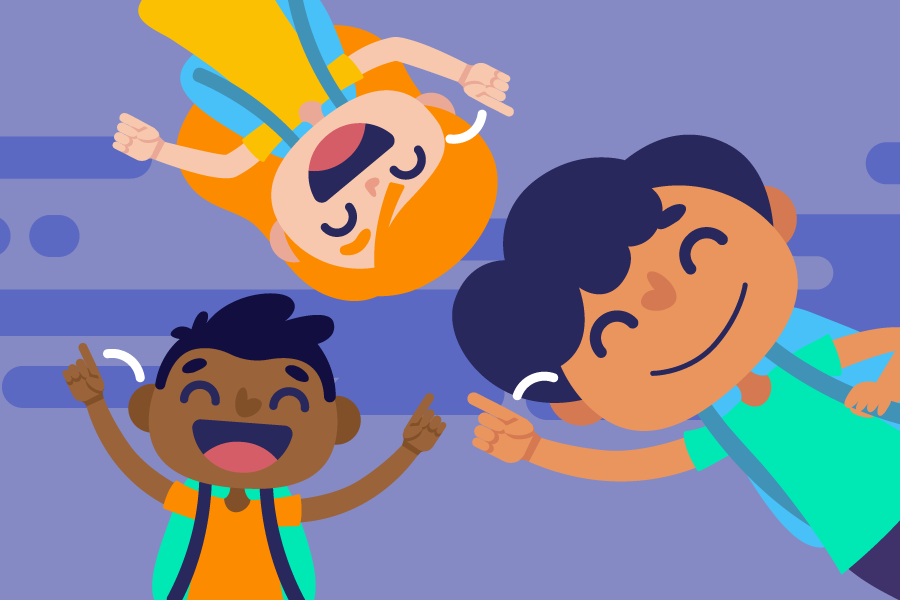
National Interpreter Appreciation Day: when it is and its importance

Did you know that there are about 30 million people, ages 12 or older, with some degree of a hearing disability in the United States? Among them, a large portion primarily communicates in ASL, American Sign Language.
Even though deaf people and those with hearing disabilities have the sense of sight and are capable of reading, many of them prefer to use ASL to communicate instead of English. This is because the English language is predominantly phonetic, which makes it difficult for the deaf community to learn.
That’s where ASL interpreters come in! Their role is to bridge the gap between the deaf and the hearing universe, facilitating communication and conveying information between English and ASL in a neutral manner. To celebrate the work of these important professionals, alongside those who work solely with oral language interpretation, the National Interpreter Appreciation Day was established. Let’s learn more about this special day!
When is the National Interpreter Appreciation Day?
In the United States, the first Wednesday of May was chosen to celebrate this occasion. The date was decided due to the creation of a Facebook page in 2013, when Joshua Jones, a deaf-blind person from California, started it as a way of celebrating the professionals who make life better by acting as interpreters for those who need them. This initiative became so popular that it is now celebrated throughout the country!
Internationally, the Interpreter Day is celebrated on September 30th. It is a tribute to St. Jerome, a great intellectual who was the first to translate the Bible from Hebrew into Greek and Latin.
Having a day to celebrate ASL interpreters is extremely important to give more visibility to this profession and professionals who are essential to breaking down communication barriers between deaf and hearing individuals. Besides, we can’t overlook the significance of their work in the daily lives of the deaf community.
What is an ASL interpreter called?
ASL interpreters are also known as Sign Language Interpreters! One curiosity you might not know is that interpreters of other Sign Languages are also called by this name.
Yes, ASL is not universal. There are various Sign Languages around the world, such as Libras (Brazilian Sign Language) and LSF (French Sign Language), which are well-known. There’s even BSL (British Sign Language)! Despite speaking English just like us, the deaf community in Great Britain communicates in another Sign Language. Pretty cool, right?
What is the difference between an ASL interpreter and an ASL translator?
Interpreter and translator are two terms that are easily confused. In fact, they are often used interchangeably, although they don’t quite work that way in reality. So let’s understand the difference between these two concepts.
An ASL translator is responsible for translating the language from its written form. For example, this person translates books from English to ASL. They are also heavily involved in the field of education.
Meanwhile, an ASL interpreter deals with both spoken and signed language simultaneously, providing real-time translation. They are the ones present in lectures and meetings where there are deaf people who communicate in Sign Language, translating signing in ASL into voice in English, and vice versa.
One thing you may not know is that ASL interpreters don’t necessarily work only with English interpretation. There are several interpreters responsible for making information and communication accessible between different Sign Languages, such as between ASL and Libras.
In fact, these professionals are often deaf individuals themselves, who are gaining more space each day because they can interpret signs in a more emotional way than most hearing interpreters. The interpretation from deaf professionals works with the assistance of a hearing feedback interpreter, who listens to the information in spoken language and interprets it into Sign Language. Then, the deaf interpreter reinterprets it to make communication more fluid.
Even though they have different roles, often these professionals perform both translation and interpretation. Since they are so present and closely involved in the daily lives of deaf people, Sign Language interpreters are also part of the deaf community.
Oh, it’s important to remember that ASL is not translated English! It has its own linguistic and grammatical structure, quite different from the English language.
What is the importance of an ASL interpreter?
ASL is a super important tool for social inclusion, as well as one of the main pillars of deaf culture. ASL interpreters are the ones capable of bringing it into the daily lives of hearing people, bridging the gap between them and the deaf community. Besides, ASL interpreters are essential for promoting the autonomy of deaf individuals.
The presence of ASL interpreters in spaces where deaf people are, aside from being very important, is also a linguistic right! But what does this mean? As ASL is recognized as a language in the United States, it is part of the law that all information available in the country should also be accessible in American Sign Language.
Conclusion
ASL interpreters are extremely important to ensure that there are no communication barriers between deaf and hearing people. Despite being a legal requirement, unfortunately, they still cannot be present in all necessary places, such as schools, medical offices, cultural spaces, and in the business environment.
This responsibility primarily falls on companies and public institutions, which should ensure accessibility in their establishments, both physical and virtual. It’s also our role as a society to recognize the importance of interpreters and demand ASL accessibility from institutions.
So, enjoy the National Interpreter Appreciation Day and learn more about this cause, and why not start learning this language as well? You can simply download the Hand Talk App and dive into this universe right now!


